“Any man that walks the mead
In a bud, or blade, or bloom, may find
A meaning suited to his mind.”
English Poet Alfred Tennyson
“Flowers are food for the soul.”
Prophet Mohammed
Everyone knows that red roses signify love, but what about other flowers?
Most of us today still give flowers, but have forgotten or are unaware of the 'language of flowers.' During the Victorian times when standards restricted open communication, various flowers and their combinations were used to convey feelings and messages both positive and negative. Knowing the 'language of flowers' was considered 'fashionable' and 'classy,' and many dictionaries of “florigraphy” were published to allow detailed and precise communication using flowers.
This website is an attempt to revive and expand the Victorian tradition of the 'language of flowers.' Yes flowers are sensuous and aesthetic on their own, but being knowledgeable about the flowers can add more dimensions to the physical flower. Weaving together these background stories and symbology of these flowers as ingredients, you can create your own special flower-story for your loved ones.
I am no flower-expert, but this website is the result of research using internet and books some dating back to the Victorian Period itself. There are multiple dictionaries for the florigraphy just within the English tradition, and several other 'language of flowers' exist in other countries as well, which complicates compiling a universal flower dictionary.
Some meanings of the same flower may even seem contradictory, but I have tried to reconcile the differences between various sources. In the end, the information I provide here are all just stories and you can pick and choose the ones you like and disregard the ones you don't. Who cares if they are wrong as long as you are happy?
The classification I use of: flower language, emblem, mythology/ folklore, history/ modern use, and literature/ arts may seem somewhat arbitrary, but I just split into these categories for convenience and let me know if these classifications bother you.
I would like this library of flower stories to grow so feel free to contact me if you have any more stories you would like to add, and I also appreciate feedback at leej5@wharton.upenn.edu.
Have fun with this website!
Special Thank You's to these Flower story donors:
(Be the first One!)
In a bud, or blade, or bloom, may find
A meaning suited to his mind.”
English Poet Alfred Tennyson
“Flowers are food for the soul.”
Prophet Mohammed
Everyone knows that red roses signify love, but what about other flowers?
Most of us today still give flowers, but have forgotten or are unaware of the 'language of flowers.' During the Victorian times when standards restricted open communication, various flowers and their combinations were used to convey feelings and messages both positive and negative. Knowing the 'language of flowers' was considered 'fashionable' and 'classy,' and many dictionaries of “florigraphy” were published to allow detailed and precise communication using flowers.
This website is an attempt to revive and expand the Victorian tradition of the 'language of flowers.' Yes flowers are sensuous and aesthetic on their own, but being knowledgeable about the flowers can add more dimensions to the physical flower. Weaving together these background stories and symbology of these flowers as ingredients, you can create your own special flower-story for your loved ones.
I am no flower-expert, but this website is the result of research using internet and books some dating back to the Victorian Period itself. There are multiple dictionaries for the florigraphy just within the English tradition, and several other 'language of flowers' exist in other countries as well, which complicates compiling a universal flower dictionary.
Some meanings of the same flower may even seem contradictory, but I have tried to reconcile the differences between various sources. In the end, the information I provide here are all just stories and you can pick and choose the ones you like and disregard the ones you don't. Who cares if they are wrong as long as you are happy?
The classification I use of: flower language, emblem, mythology/ folklore, history/ modern use, and literature/ arts may seem somewhat arbitrary, but I just split into these categories for convenience and let me know if these classifications bother you.
I would like this library of flower stories to grow so feel free to contact me if you have any more stories you would like to add, and I also appreciate feedback at leej5@wharton.upenn.edu.
Have fun with this website!
Special Thank You's to these Flower story donors:
(Be the first One!)












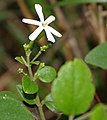




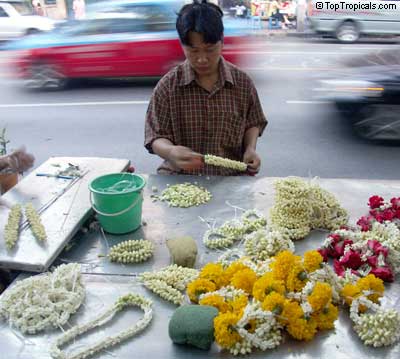
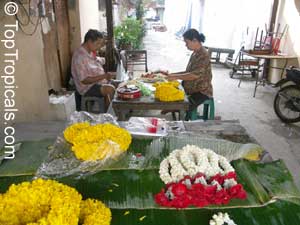
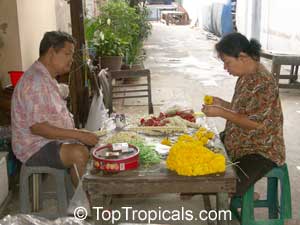
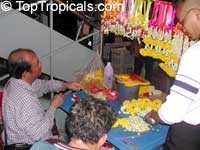


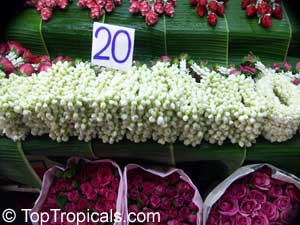
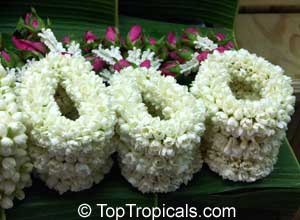
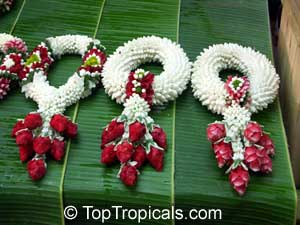

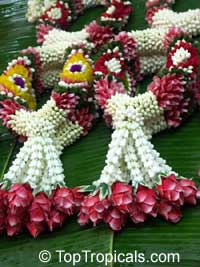
 From the earliest times, indeed throughout the history of civilization, people from around the world have held the rose close to their hearts. The earliest known gardening was the planting of roses along the most travelled routes of early nomadic humans. Earliest roses are known to have flourished 35 million-years ago and hips have been found in Europe and petrified rose wreaths have been unearthed from ancient Egyptian tombs.
From the earliest times, indeed throughout the history of civilization, people from around the world have held the rose close to their hearts. The earliest known gardening was the planting of roses along the most travelled routes of early nomadic humans. Earliest roses are known to have flourished 35 million-years ago and hips have been found in Europe and petrified rose wreaths have been unearthed from ancient Egyptian tombs. 
































